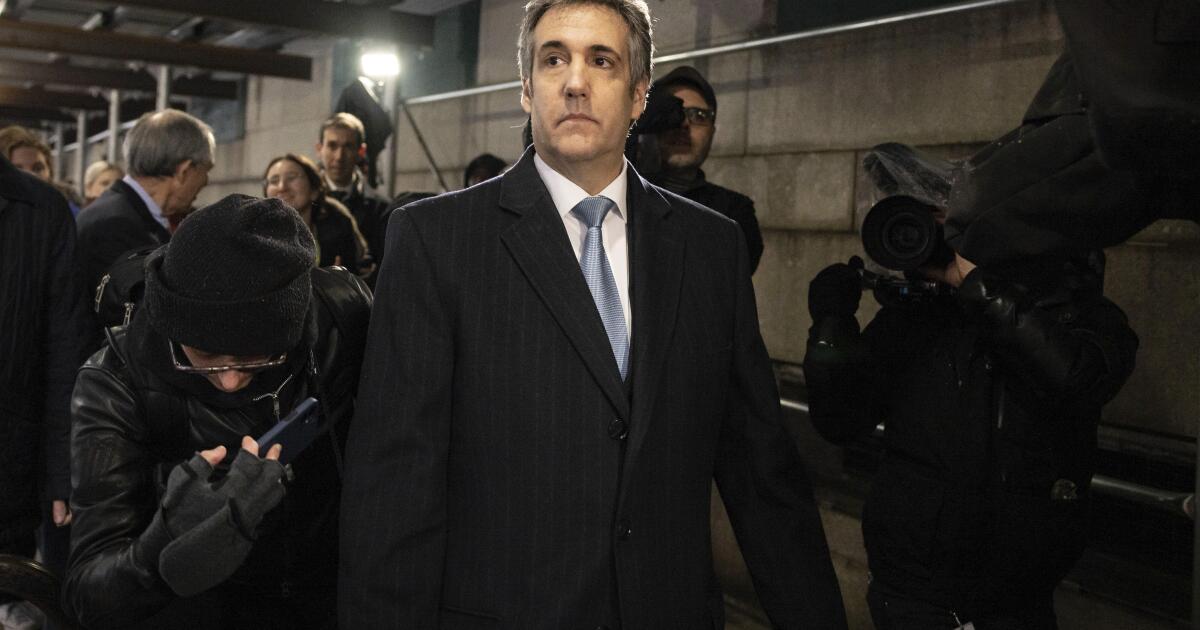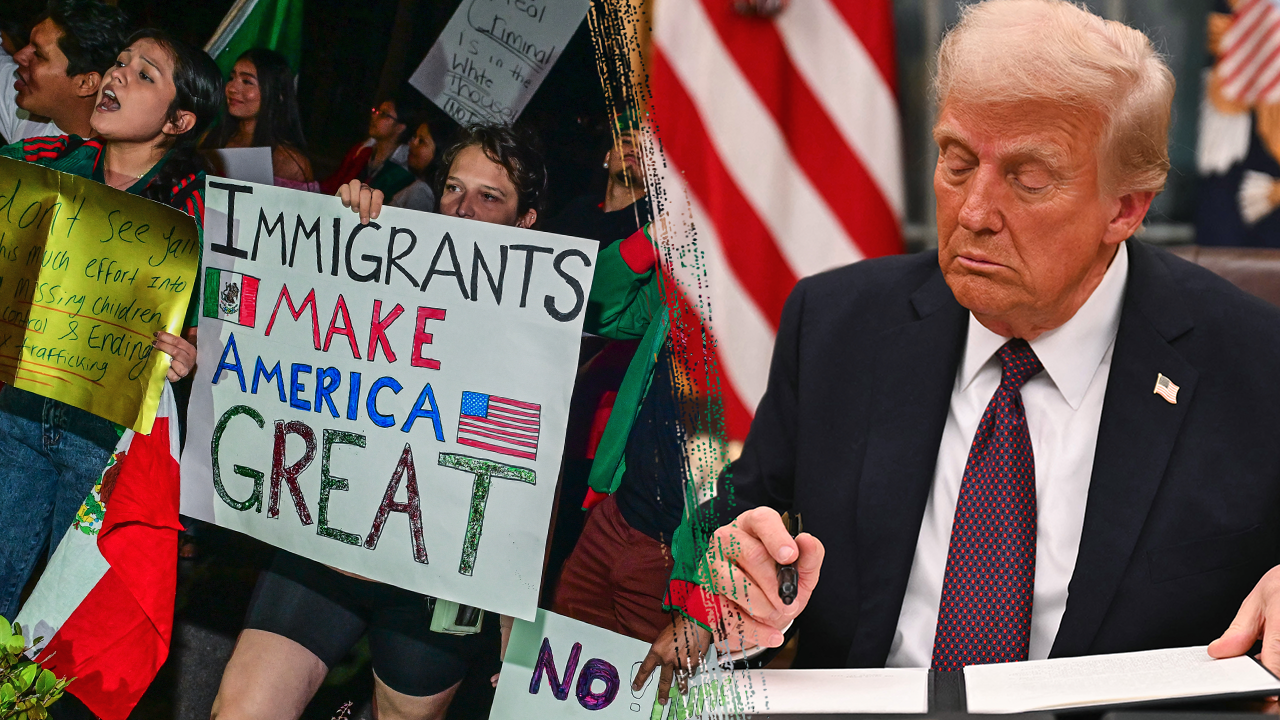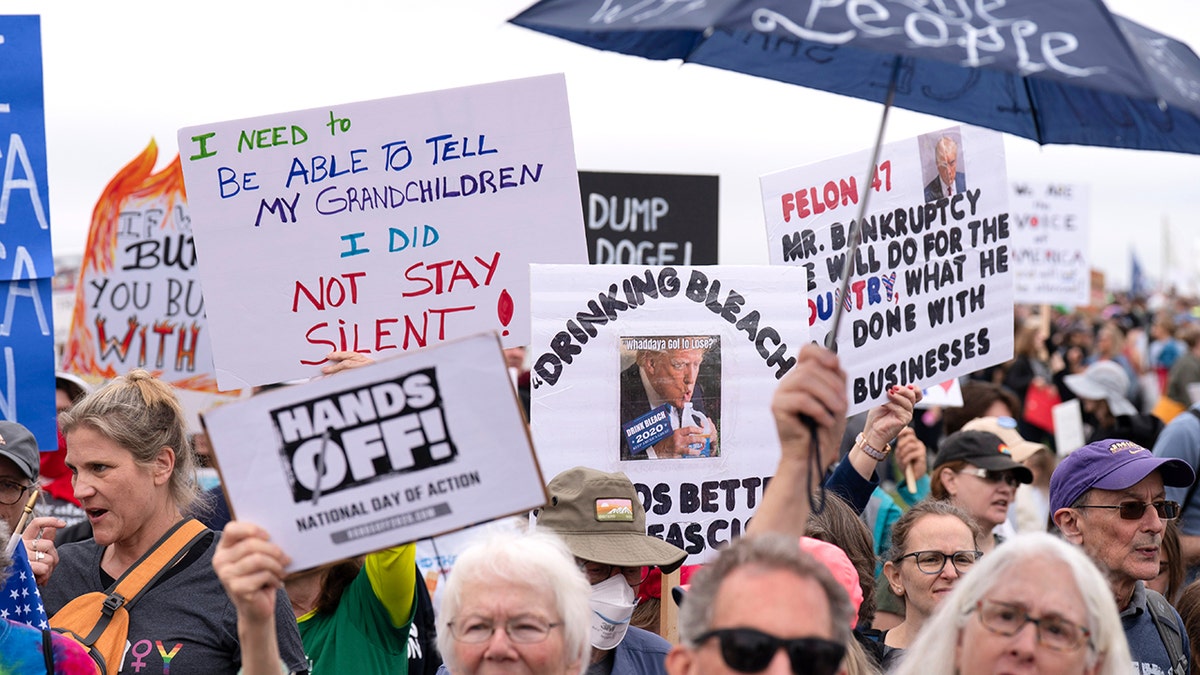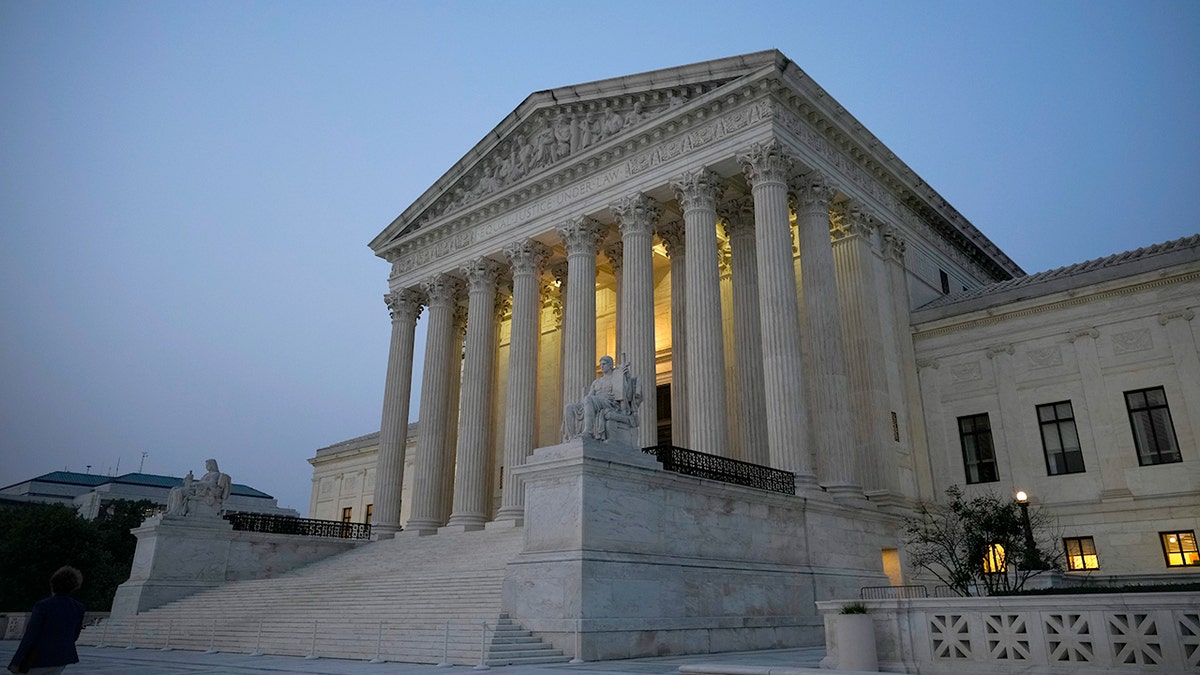Politics
Column: The Trump prosecution has a Michael Cohen problem — and a plan to solve it

Since the opening of the Donald Trump’s New York trial — when the former president’s counsel told the jury that the prosecution’s star witness “cannot be trusted” — the defense has telegraphed its principal strategy: Eviscerate Michael Cohen.
As Trump’s fixer and attack dog at the time of the alleged crimes, Cohen was more central to the events spelled out in the indictment than anyone in the defendant’s orbit. He even fronted his personal funds to quiet Stormy Daniels, who was shopping a story of a 2006 sexual liaison with Trump.
And having pleaded guilty to tax evasion, false statements and campaign finance violations related to the Daniels affair, along with a separate plea to making false statements to Congress, he seems tailor-made to be accused of lying to settle scores with his former boss. For the loyalty-obsessed Trump, moreover, the prospect of savaging a traitor promises additional psychological rewards.
But before the jury has even heard from Trump’s bête noire, the prosecution has made great strides to neutralize any plan to undermine Cohen’s testimony.
They have done so first and foremost by presenting a wealth of evidence that prospectively corroborates what Cohen will say. (And after his grand jury testimony and numerous reported sitdowns with the district attorney’s office, the prosecution knows what Cohen is going to say down to the last comma.)
The prosecutors’ decision to introduce their story through David Pecker, the former chief executive of the company that owned the National Enquirer, worked beautifully. A sort of Runyonesque rascal in his business affairs, Pecker came across as completely forthcoming on the stand. And he came forth with many details that involved Cohen and will be echoed by him. Those particulars included a key August 2015 meeting in which Pecker said he first promised Trump that he would smother the stories of his purported former sexual partners who might come forward now that he was a presidential candidate.
Every major witness since Pecker has also covered ground that Cohen will retread. By the time the jury hears the account of Trump’s onetime fixer, it will ring familiar in almost all its particulars.
Almost but not quite all. Only Cohen and Trump could have been privy to certain details of the alleged falsification of documents, the basis of the 34 criminal counts in the indictment.
Still, the district attorney will be able to respond to the defense’s ferocious attacks on Cohen by noting, in time-honored prosecutorial form, that the jury needn’t rely on his word alone because of all the corroboration.
In fact, the prosecution’s case has been sprinkled with disparaging characterizations of Cohen by its own witnesses, who have called him a “jerk” and worse. It’s another signal that the district attorney will argue that the case does not stand or fall on Cohen’s testimony.
And much of what follows Cohen will reinforce his testimony. Longtime Trump aide Hope Hicks figures to provide devastating corroboration of Cohen’s testimony about “the Boss,” including her firsthand account of the 2015 meeting.
The extensive corroborating evidence is just one way the prosecution is cutting off the defense’s main line of attack. As important, prosecutors have constructed and reinforced a narrative that bolsters Cohen’s story. It moves from the initial meeting, through the efforts to “catch and kill” the stories of a Trump Tower doorman and a Playboy model, and then to the critically important “Access Hollywood” tape that left the Trump campaign in an existential crisis.
The recording, which surfaced shortly before the election and caught Trump boasting of sexually assaulting women, prompted Republican Party leaders such as John McCain to withdraw their support for Trump. The jury heard evidence on Friday that key players in the catch-and-kill scheme were confident that Trump could not recover from the revelation.
Enter Daniels, who had recently resumed her efforts to parlay her alleged affair with Trump into a payday. If the campaign was on life support, her account threatened to pull the plug.
The story that prosecutors have presented from multiple sides thereby leads to the conclusion that the dealings with Daniels could have had only one motivation: to salvage the campaign. And that meant that Daniels not only had to be paid off but also that the purpose of the payoff had to be hidden.
The force of this account has Team Trump staring up at a nearly insurmountable incline. It’s not just that Cohen’s explanation of Trump’s alleged scheme and purposes will be roundly corroborated by other witnesses; it’s that no other explanation would make any sense of the whole patchwork of evidence.
The prosecution’s marshaling of that evidence leaves the defense with no viable counternarrative. Assume Trump’s team beats Cohen up for days on cross-examination and reiterates in closing that he can’t be trusted. What alternative story can they offer to supply a reasonable doubt about the district attorney’s account?
As Pecker testified and we will probably hear repeated at closing, Cohen couldn’t buy lunch without Trump’s approval. Is it remotely possible that he would nevertheless take out a home equity loan and pay Daniels $130,000 without Trump’s knowledge and direction? The Manhattan jury might be expected to conclude, in a word, “Fuhgeddaboudit.”
That’s not to say that the prosecution is coasting toward a guilty verdict or that the jury’s response to Cohen won’t matter. The charges of falsifying business records are still vulnerable to technical challenges involving intent and other questions. Especially with two lawyers in the jury’s ranks, stitching up that part of the case could be difficult. But with a broader rejection of Cohen’s testimony looking unlikely, the defense’s options for preventing a conviction are dwindling.
Harry Litman is the host of the “Talking Feds” podcast and the Talking San Diego speaker series. @harrylitman

Politics
Contributor: The Israeli Embassy killings and the ominous turn in political violence

Actions, we know, have consequences. And an apparent Marxist’s cold-blooded murder of two Israeli Embassy staffers in Washington on Wednesday night was the natural and inevitable consequence of a conscientious, years-long campaign to dehumanize Jews and otherize all supporters of the world’s only Jewish state.
Seriously, what did you think was going to happen?
Some of President Trump’s more colorful all-caps and exclamation-mark-filled social media posts evince an impending jackboot, we’re sometimes told. (Hold aside, for now, columnist Salena Zito’s apt 2016 quip about taking Trump seriously but not literally.) Words either have meaning or they don’t. And many left-wing Americans have, for a long time now, argued that they have tremendous meaning. How often, as the concept of the “microaggression” and its campus “safe space” corollary took off last decade, were we told that “words are violence”? (I’ll answer: A lot!)
So are we really not supposed to take seriously the clear calls for Jewish genocide that have erupted on American campuses and throughout American streets since the Hamas pogrom of Oct. 7, 2023? Are we really supposed to believe that chants such as “globalize the intifada,” “from the river to the sea, Palestine will be free” and “there is only one solution, intifada revolution” are vague and open to competing interpretations?
That doesn’t even pass the laugh test.
When pro-Israel Jewish American Paul Kessler died after being hit on the head during a clash of protesters in Thousand Oaks on Nov. 5, 2023, that is what “intifada revolution” looks like in practice. When Israeli woman Tzeela Gez was murdered by a jihadist while en route to the hospital to deliver her baby earlier this month, that was what “from the river to the sea” looks like in practice. And when two young Israeli Embassy staffers were executed while leaving an event this week at Washington’s Capital Jewish Museum, that is what “globalize the intifada” looks like in practice.
Really, what did you think was going to happen?
Indeed, it is the easily foreseeable nature of Wednesday night’s slayings that is perhaps the most tragic part of it all. The suspect in the deaths of Yaron Lischinsky and Sarah Milgrim left behind a handy manifesto laying out a clear political motivation. This was not a random drive-by shooting. Hardly. This was a deliberate act — what appears to be an act of domestic terrorism. And the suspect, Elias Rodriguez, has a long history of involvement in far-left activist causes. If the killer intended to target Jews, then the fact that both victims were apparently Christian only underscores the “globalize” part of “globalize the intifada.”
Zito had it right back in 2016: Trump’s social media posts should be taken seriously, not literally. But when it comes to the murderous, genocidal clamoring for Jewish and Israeli blood that has become increasingly ubiquitous ever since the Jews themselves suffered their single bloodiest day since the Third Reich, such anti-Israel and antisemitic words must be taken both seriously and literally.
A previous generation of lawmakers once urged Americans to fight the terrorists “over there” so that they can’t harm us “here.” How quaint! The discomfiting reality in the year 2025 is this: The radicals, both homegrown and foreign-born alike, are already here. There are monsters in our midst.
And those monsters are not limited to jihadists. Domestic terrorists these days come from all backgrounds. The deaths of two Israeli diplomats are yet another reminder (not that we needed it): Politically motivated violence in the contemporary United States is not an equivalent problem on both the left and the right.
In 2012, Floyd Lee Corkins attempted to shoot up the socially conservative Family Research Council because he heard it was “anti-gay.” In 2017, James Hodgkinson shot up the Republican congressional baseball team a few weeks after posting on Facebook that Trump is a “traitor” and threat to “our democracy.” In 2022, Nicholas Roske flew cross-country to try to assassinate Supreme Court Justice Brett Kavanaugh and thus prevent Roe vs. Wade from being overturned. Earlier this year, anti-Elon Musk activists burned and looted Teslas — and assaulted Tesla drivers — because of Musk’s Trump administration work with his cost-cutting Department of Government Efficiency. And who can forget Luigi Mangione, who is charged in the shooting death of UnitedHealthcare Chief Executive Brian Thompson?
Both “sides” are not culpable here. They just aren’t. Israel supporters in America aren’t out there gunning down people waving the PLO flag. Nor are capitalists out there gunning down socialists.
There is a real darkness out there in certain — increasingly widespread — pockets of the American activist left. Sure, parts of the right are also lost at the moment — but this is not an apples-to-apples comparison.
Regardless, the violence must end. And we must stop treating open calls for murder or genocide as morally acceptable “speech.” Let’s pull ourselves back from the brink before more blood is shed.
Josh Hammer’s latest book is “Israel and Civilization: The Fate of the Jewish Nation and the Destiny of the West.” This article was produced in collaboration with Creators Syndicate. @josh_hammer
Insights
L.A. Times Insights delivers AI-generated analysis on Voices content to offer all points of view. Insights does not appear on any news articles.
Viewpoint
Perspectives
The following AI-generated content is powered by Perplexity. The Los Angeles Times editorial staff does not create or edit the content.
Ideas expressed in the piece
- The article argues that the killings of two Israeli Embassy staffers were a “natural and inevitable consequence” of widespread anti-Semitic rhetoric and the dehumanization of Jews since the October 7 Hamas attacks, citing officials who labeled the shooting an “act of terror”[1][3].
- It links the attack to pro-Palestinian chants like “globalize the intifada” and “from the river to the sea,” asserting these phrases are explicit calls for violence rather than protected political speech[1][3].
- The author claims political violence in the U.S. is disproportionately perpetrated by the far left, citing historical examples such as the 2012 Family Research Council shooting and the 2022 attempted assassination of Justice Brett Kavanaugh[3].
- Hammer emphasizes that the suspect’s far-left activism and manifesto reveal a deliberate, ideologically motivated act of domestic terrorism, underscoring a broader trend of anti-Israel radicalization[1][3].
Different views on the topic
- Critics caution against broadly attributing isolated violent acts to entire political movements, noting that most activists condemn violence while advocating for Palestinian rights through nonviolent means[1][2].
- Some argue that condemnations of Israeli government policies should not be conflated with anti-Semitism, emphasizing the distinction between criticizing a state and targeting a religious group[1][3].
- Legal experts highlight that while the attack was labeled antisemitic, the victims’ identities as non-Jewish Israeli staffers complicate narratives framing the shooting solely as religiously motivated hatred[1][2].
- Advocates for free speech warn against equitating protest chants with incitement, stressing the importance of contextualizing rhetoric to avoid suppressing legitimate political dissent[1][3].
Politics
How Donald Trump Has Remade America’s Political Landscape
Politics
Upending US birthright citizenship would have drastic negative impact, defenders warn

The Supreme Court heard a case this month centered on President Donald Trump’s executive order seeking to end so-called birthright citizenship, in one of the most closely watched and potentially impactful cases heard by the court in recent years.
Though the case itself was used largely as a means of challenging lower court powers to issue so-called universal or nationwide injunctions, justices on the high court did inquire about the merits of the order itself, “Protecting the Meaning and Value of American Citizenship,” which Trump signed on the first day of his second White House term.
The order, which was slated to take force Feb. 20, directed all U.S. agencies to stop issuing citizenship documents to children born to illegal immigrants or children born to mothers living in the country on a temporary visa, if the father is not a permanent resident or U.S. citizen.
Despite the Supreme Court’s focus on universal injunctions in hearing the case, deep and unyielding concerns persist about Trump’s attempt to undo more than 100 years of legal precedent.
JUDGES V TRUMP: HERE ARE THE KEY COURT BATTLES HALTING THE WHITE HOUSE AGENDA
U.S. President Donald Trump shakes hands with U.S. Supreme Court Chief Justice John Roberts (R) as Melania Trump, Donald Trump Jr. and Ivanka Trump look on after being sworn in during inauguration ceremonies in the Rotunda of the U.S. Capitol on January 20, 2025, in Washington, D.C. Chip Somodevilla/Pool via Reuters/File Photo (Reuters)
The ACLU included in its lawsuit the story of one couple from Indonesia but living in New Hampshire whom they said would be affected by the order.
“They arrived in 2023, applied for asylum, and their application awaits review,” ACLU attorneys said of the couple. “The mom-to-be is in her third trimester.
“Under this executive order, their baby would be considered an undocumented noncitizen and could be denied basic health care and nutrition, putting the newborn at grave risk at such a vulnerable stage of life,” they added.
And such problems would persist throughout their lives, lawyers for the group noted. These persons would not be able to obtain necessary identification, such as drivers’ licenses, and would not be able to vote, hold some jobs or serve on juries.
Though Trump had spoken in detail in his first term and on the campaign trail about wanting to end birthright citizenship, his executive order sent shockwaves through the nation. It was met by a wave of lawsuits from Democrat-led states and immigrants’ rights groups.
WHO IS JAMES BOASBERG, THE US JUDGE AT THE CENTER OF TRUMP’S DEPORTATION EFFORTS?

Demonstrators hold up signs during a “Hands Off!” protest against President Donald Trump at the Washington Monument in Washington, Saturday, April 5, 2025. (AP Photo/Jose Luis Magana)
One lawsuit, brought by 18 Democratic attorneys general, warned that ending birthright citizenship would strip hundreds of thousands of U.S.-born children of their citizenship as the result of a circumstance completely outside a child’s control.
Statistics also bear this out. Roughly 150,000 children are born annually in the U.S. to parents of noncitizens. If the order were to take force as Trump envisioned, experts warned the impact would be catastrophic.
”President Trump’s attempt to unilaterally end birthright citizenship is a flagrant violation of our Constitution,” New Jersey Attorney General Matthew Platkin, who joined 17 other Democrat-led states in suing to block the order, said earlier this year.
TRUMP FACES ANOTHER DEPORTATION SETBACK WITH 4TH CIRCUIT APPEALS COURT

The U.S. Supreme Court is at the center of fresh debate over the interpretation of a core clause of the Fourteenth Amendment. (Drew Angerer/Getty Images)
“For more than 150 years, our country has followed the same basic rule: Babies who are born in this country are American citizens,” Platkin added.
More than 22 U.S. states and immigrants’ rights groups sued the Trump administration to block the change to birthright citizenship prior to the Supreme Court’s decision to take up the case, arguing in court filings that the executive order is both unconstitutional and “unprecedented.”
To date, no court has sided with the Trump administration in upholding the executive order.
-

 Technology1 week ago
Technology1 week agoMeta asks judge to throw out antitrust case mid-trial
-

 World1 week ago
World1 week agoCommissioner Hansen presents plan to cut farming bureaucracy in EU
-

 News1 week ago
News1 week agoNew Orleans jailbreak: 10 inmates dug a hole, wrote ‘to easy’ before fleeing; escape plan found
-

 News1 week ago
News1 week agoVideo: Doctors Heal Infant Using First Customized-Gene Editing Treatment
-

 Movie Reviews1 week ago
Movie Reviews1 week agoDevil’s Double Next Level Movie Review: Trapped in a punchline purgatory
-

 Business1 week ago
Business1 week agoVideo: How Staffing Shortages Have Plagued Newark Airport
-

 Business1 week ago
Business1 week agoConsumers Show Signs of Strain Amid Trump's Tariff Rollout
-

 Movie Reviews1 week ago
Movie Reviews1 week ago‘Nouvelle Vague’ Review: Richard Linklater’s Movie About the Making of Godard’s ‘Breathless’ Is an Enchanting Ode to the Rapture of Cinema













